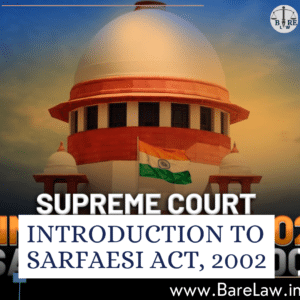
The history of the Indian Penal Code
In the uncivilized society, there existed no criminal law, and any person was free to attack any person or property. With the advancement of time, compensation was agreed to be accepted and with further advancement, society gave birth to an archaic criminal law. The history of criminal law may be divided into-
Ancient Hindu law
Mohammedan law
English criminal law
Mohammedan law was in force when the British came to India and East India company took over. The company adopted the policy of status quo in the beginning but gradually realized the defects in Mohammedan law. Subsequently, a need for a Penal Code arose. Indian Penal Code is a comprehensive code covering all substantive elements of criminal law in India. This code was drafted with the guidance of the first law commission founded in 1834 under the charter act of 1833. Lord Thomas Babington Macaulay was the chairman. This code first came into being during 1862 under British India. Although the princely states had their own legal systems until the 1940s.Since then, the code has been amended several times.
An overview-
The Indian penal code 1860 is divided into 23 Chapters and comprises 511 sections. The beginning of the code provides the definitions and exceptions used in it. The Indian penal code is classified into various chapters as given below-
Chapter I- covers sections 1 to 5. This chapter provides the basic introduction to the Indian Penal Code.
Section 1- Title and extent of the operation.
This act shall be known as the Indian Penal Code, extending to the whole of India. (The exception to the States of Jammu and Kashmir was removed by section 95 and the fifth schedule of act 34 of 2019)
Section 2- Punishment of offences within India.
Every person shall be liable to punishment for committing any offence within the territory of India, irrespective of his race, nationality, caste, colour or creed.
Section 3-Punishment of offences beyond India.
Any person liable to criminal jurisdiction for an offence committed outside India by any Indian law shall be tried according to this code in the same manner as if the offence had been committed within Indian territory.
Section 4- an extension of code to extra-territorial offences.
This section lays down the provisions for the extended operation of the court for the acts committed beyond the territory of India, according to which it shall apply to any offence committed by-
- Any citizen of India outside the boundaries of India
- Any person on any aircraft or ship registered in India, no matter where it be.
- Any person outside India who targets the computer resources within India.
This section further explains the following-
Offence— every act committed outside Indian territory which, if committed within India, would be punishable under this code;
Computer resources- the meaning assigned to it in clause (k) of sub-section (1) of section 2 of the Information Technology Act, 2000 shall be considered.
Section 5- laws not to be affected by this act.
This section states that the jurisdiction of IPC shall not affect the provisions let down and other acts relating to the officers in the service of the Indian government. In simpler words, Section 5 exempts the jurisdiction of this code in the cases related to officers, soldiers, sailors and airmen in the service of the Indian government. The IPC shall be applicable to a person who has been dismissed or discharged from his duty.
Chapter II – Covers sections 6 to 52 and deals with the general explanations of the offences, penal provisions and their illustrations and exceptions.
Chapter III- Covers sections 53 to 75 and deals with the punishments to which offenders are liable under this code.
Chapter IV- covers sections 76 to 106 and deals with the general exceptions.
Chapter V – covers sections 107 to 120 about abetment
Chapter VA – covers sections 120A to 120B and deals with criminal conspiracy.
Chapter VI – covers sections 121 to 130 about offences against the State
Chapter VII- covers sections 131 to 140 about offences relating to the Army, Navy and Air Force
Chapter VIII- covers sections 141 to 160 about Offences against the Public Tranquillity
Chapter IX- covers sections 161 to 171 about Offences by or relating to Public Servants
Chapter IXA- covers sections 171A to 171I about Offences Relating to Elections
Chapter X -covers sections 172 to 190 about contempt of Lawful Authority of Public Servants
Chapter XI-covers Sections 191 to 229 about false Evidence and Offences against Public Justice
Chapter XII- covers Sections 230 to 263 about offences relating to coin and Government Stamps
Chapter XIII- covers Sections 264 to 267 about offences relating to Weight and Measures
Chapter XIV- covers Sections 268 to 294 about offences affecting Public Health, Safety, Convenience, Decency and Morals.
Chapter XV- covers Sections 295 to 298 about offences relating to Religion
Chapter XVI – covers sections 299 to 377 and deals with offences affecting the human body.
Chapter XVII- covers sections 378 to 462 and deals with offences against property
Chapter XVIII – Covers sections 463 to 489 -E and deals with offences relating to documents and property marks
Chapter XIX- covers sections 490 to 492 and deals with matters relating to breach of contract of service
Chapter XX- covers sections 493 to 498 and deals with offences related to marriage
Chapter XXA- deals with Section 498 A, about cruelty by husband and his relatives
Chapter XXI – covers sections 499 to 502 dealing with defamation
Chapter XXII- covers sections 503 to 501 and deals with criminal intimidation, insult and annoyance
Chapter XXVIII- deals with section 511 dealing with attempts to commit offences.
The court is acknowledged as cogently drafted code universally. The efficacy and relevance of the code were supported by the judge of the supreme court of the United Kingdom mainly because of the broadness of its drafting.









